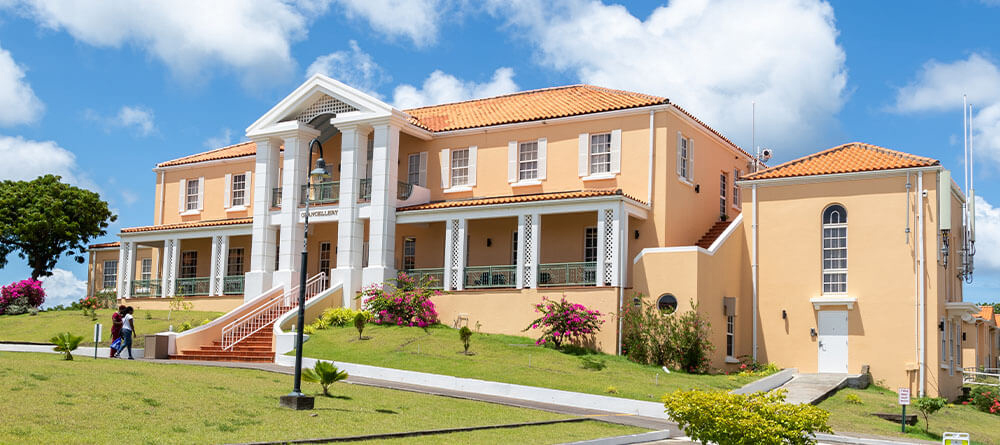It’s important to carefully investigate every major purchase before buying. You probably already do this when comparing vehicles or large appliances, but what about when evaluating medical programs you’d like to attend?
While you might be tempted to focus solely on tuition when evaluating the total cost of medical school, that’s just one part of the equation. It’s important to not lose sight of the other expenses you will likely incur as a medical student.
Once you take everything into account, a lower-cost medical school could actually end up costing you just as much as—or even more than—a school with a higher tuition. Read on to learn about some of the medical school expenses you may not have considered.
8 expenses that impact the cost of medical school
When weighing the price of medical school, it’s easy to overlook some of the smaller, seemingly inconsequential costs. But disregarding such expenses can be a mistake, as they can add up to a big difference when all is said and done.
We enlisted an expert’s help to identify some of the common medical school costs to consider.
1. Medical school applications and campus visits
Medical school applications might not be the first thing you think of when considering the cost of medical school, but they’re something to keep in mind. If you plan to apply using the American Medical College Application Service (AMCAS), you’ll pay a $170 processing fee that covers one school. Every additional medical school you apply to through the system will cost you $43. Programs that use their own application instead of participating in AMCAS will have separate application fees.
Campus visits during interview season can also be particularly costly, according to Dr. Antonio Webb, an orthopedic resident surgeon and author. “If you go to 10 interviews, that can easily be $10,000 because you have to pay for your flight, your hotel, a rental car, and food expenses while you travel,” he explains.
Some medical schools make a concerted effort to ease the financial burden for visiting applicants, but not all programs are so accommodating.

2. Books and equipment
Buying books for classes is just as standard for medical school as it is for college. Most classes will require one or more textbooks, which can easily add up to $1,000 or more per year. Medical students may also be required to fund other items, such as a white coat, stethoscope, learning guides, etc.
3. Student fees
Tuition makes up most of the cost of medical school, but students should also expect to pay additional fees for everything from student organizations to parking facilities. Medical schools don’t all follow the same protocol when listing student fees. Some will include a lump sum while outlining their cost of attendance, but the fee listed may not be inclusive of every additional cost.
4. Cost of living
This broad category can include day-to-day travel expenses, food, rent, and even childcare. While most schools make general estimates to assist students trying to evaluate their financial need, some projections are just too conservative.
Making sure you have an accurate idea of what it’s going to cost to live in a certain area is key to avoiding financial strain. Given the demanding nature of medical school curriculum, it’s not realistic for students to have a part-time job. This means most students rely solely on medical school loans.
Many students forget to factor in away rotations as well. These are clinical rotations that take place away from your home institution. SGU students, for example, are expected to complete core rotations at SGU-affiliated hospitals and centers, but they’re also permitted to participate in up to 12 weeks of nonaffiliated rotations. In such cases, medical students will need to consider food costs, travel expenses, and housing accommodations.

5. Health insurance
If you aren’t already covered by a health insurance policy of your own, you’ll want to enroll in your school’s student plan. The cost of student plans can vary significantly from one program to the next. Most institutions will list this information somewhere on their website, but don’t hesitate to reach out to financial aid offices to learn more.
Should you need medical attention while attending a program that allows you to forgo coverage, avoid footing a significant medical bill by considering acquiring coverage through the American Medical Student Association, which offers insurance plans for members and their families.
6. Exams
You’ll face the Medical College Admission Test (MCAT) before you ever step foot on campus. Your results on the MCAT play a big role in whether you get accepted, so many pre-meds do everything they can to ready themselves. Dr. Webb shares that he opted to take two prep courses, costing him around $4,000.
As a student, you will start to prepare for the United States Medical Licensing Examination (USMLE) Step 1—the first in a three-part series—pretty early in your medical education. As of 2022, the cost to sit for the Step 1 is $645, but you can make that expense more manageable with some preparation. “Set aside maybe $50 every month,” Dr. Webb recommends. “When that time comes up, you’ll already have the money to pay for it.”
Of course, you could end up paying more if you need to retake any of the USMLE exams in order to obtain a passing score. For this reason, you should make sure you research how well students from various schools perform on Step 1 to ensure your MD program can adequately prepare you for success.
7. Costs associated with residency search
You’ll want to apply for plenty of postgraduate positions, but that doesn’t mean you should include programs you wouldn’t actually consider attending. It’s wise to do as much research as possible and be diligent about where you want to apply. If possible, consider going in a group with fellow med students when traveling for visits.
If you use credit cards, Dr. Webb suggests taking advantage of ones that offer points or some other type of reward system. You could earn travel credits or even get cash back for spending on everyday expenses. Just be smart about how you swipe — you don’t want to accumulate credit card debt.

8. A few important extras
When all is said and done, there are still some important costs students may forget to consider. “I would say emergencies,” Dr. Webb says. “Like if your car breaks down, or if you have an event where you have to be hospitalized for a few days.” He notes that it’s helpful to build up a buffer in advance—if you’ve set aside some money, replacing your car battery won’t be that big of a deal.
Lastly, don’t forget to allow yourself to have some fun. Try and set aside some money for entertainment or leisure. It’s important to enjoy your time in between training and studying to stay energized and avoid burning out.
Make a wise investment
There’s clearly more to the cost of medical school than just tuition, so make sure you’re being critical when comparing programs. You may need to contact financial aid offices at different schools for specific details if they aren’t spelled out on a program’s website. Be sure to ask questions about anything that seems unclear.
It’s also helpful to gather advice from physicians who have navigated the financial burdens of medical school and come out on the other side. Learn some of their most prominent tips in our article “SGU Alumni Dish on What Paying for Medical School is Really Like.”
* This article has been updated from a previous version to include current facts and figures.

